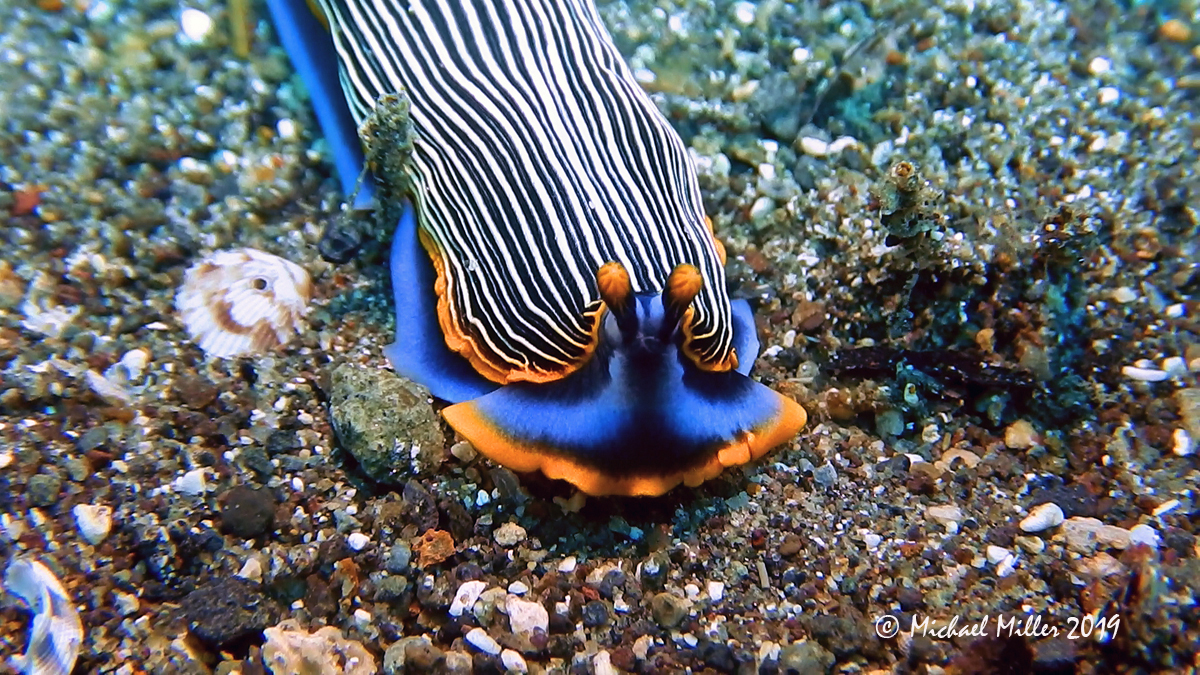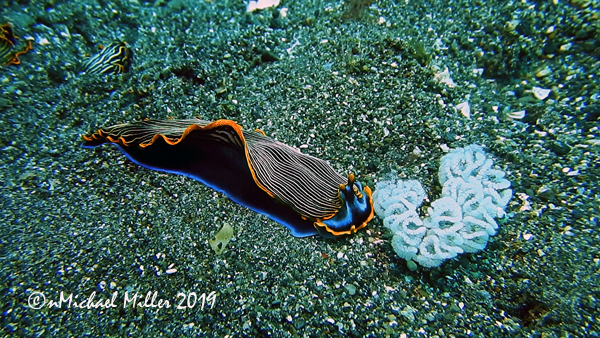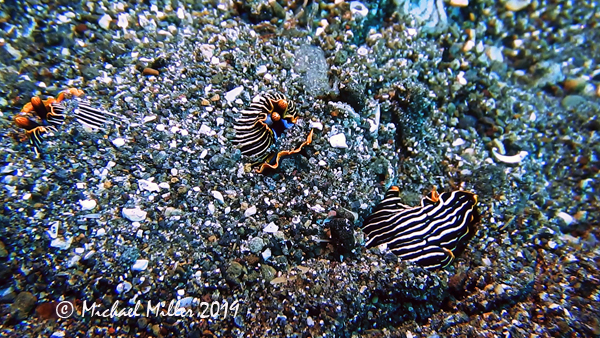 |
Image(s) courtesy of Webmaster (Michael Miller)
Anilao, Philippines
Freeze Frame from Nikon CoolPix AW 130 Video
Armina occulta with what is believed to be its coiled egg mass
 | Armina occulta Caballer & Chavanich, 2017 This is one of the many black Armina's with white longitudinal lines on the dorsum. It can be distinguished by the blue marginal band on the foot, the orange marginal band on oral veil and mantle, and the bright blue lines curving laterally from the base of the rhinophores to the extremities of the oral veil. |
Armina occulta in usual repose during daytime. One being out was an anomaly
 | , Usually a nocturnal species, Mike caught the one above out feeding during the day, tricked by dark overcast skies. A sea pen predator, it feeds on the sea pen, Pteroides sp. It has been observed throughout the western Pacific and reaches a length of 80 mm. |
Sammamish, WA 98074
Mar., 2019
Send Dave email at davidwbehrens@gmail.com

Attention all you Sluggers, and you know who you are! The NSSI 2nd edition is now available in ebook PDF and book form . The hard back version will become available Nov. 1st. Both will cost $65 (individually). You will need to jump through a few hoops to get the electronic version as pdf distribution is protected by Adobe ID!! Please read the following to enable reading your electronic purchase! This new 2nd Edition is updated and reorganized, including 185 new species. Among other features, the new edition includes additional photographs of species, an identification key, and an up-to-date classification reflecting the latest evolutionary relationships. The Indo-Pacific represents the largest expanse of tropical ocean in the world, stretching from the Indian Ocean coast of southern Africa and the Red Sea to the central Pacific of the Hawaiian Islands, Easter Island and the Marquesas. This region supports the most diverse marine fauna of any place in the world for most groups of marine organisms. The nudibranchs and sea slugs are no exception to this rule; there are about 3,000 described species of these organisms in the world and at least 40% of these have been found exclusively in the Indo-Pacific tropics. This book illustrates 2,138 Indo-Pacific nudibranchs and sea slugs, including many undescribed species.
|

|
